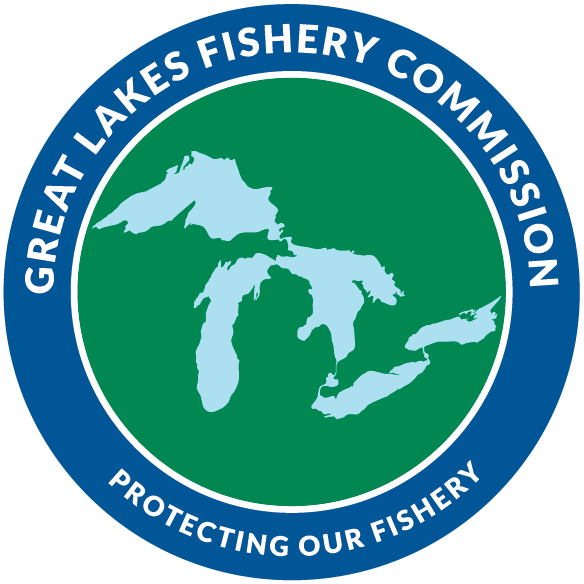Updated 2024-11-06 14:37:27
Lake Huron -> 10.0 Species Diversity -> Species Richness
Reporting Interval
2018 - 2022
Area
Lakewide
Meeting Target?
Meets
Indicator Trend
No trend
Confidence?
High
10.1.1 Species Richness in Lake Huron
Nearshore US Waters - The number of species present in Nearshore US waters of Lake Huron has remained stable, with no new invasive species introductions or native species extirpations during the current reporting period (2018-2022). Though the number of species recorded each year in this dataset has increased since 2013, this is due only to increases in sampling efficiency and effort. The dataset used for this indicator comes from US Fish and Wildlife Service.
Joint St. Marys River Waters - The number of species present in the St. Marys River has remained relatively stable from during the current reporting period (2018 – 2022). Since 2000, there have been a number of new invasive species to the system, most notably Eurasian Ruffe in 2017, Tubenose Goby in 2017, and Round Goby in 2008. Datasets used for this indicator include US Fish and Wildlife Service and Great Lakes Fishery Commission St. Marys River Fisheries Task Group.
Canadian Waters - The number of species present in Canadian waters of the main basin, Georgian Bay and the North Channel, have remained stable, with no new invasive introductions or native species extirpations during the current reporting period (2018 – 2022). The datasets used for this indicator come from the Ontario Ministry of Natural Resources.
Figure 1. Native, non-native, and total number of species detected over time in the nearshore US waters of Lake Huron. Increases in species detection are likely due to increases in detection efficiency, not because of new species in the Lake.
Figure 2. Native, non-native, and total number of species detected over time in the joint St. Marys River waters of Lake Huron. Variability in species detections are due to increases in detection efficiencies, likely not because of new species in the River.
Figure 3. Native, non-native, and total number of species detected over time in Ontario waters of Lake Huron.
Methodology
Nearshore US Waters - Data comes from the USFWS AIS Early Detection and Monitoring database (2013-2022). Surveys occur in eastern Upper Peninsula of Michigan, Cheboygan, Rogers City, Thunder Bay, Au Sable River, Au Gres, and Saginaw Bay. Gear includes electrofishing, bottom trawl, gill net, fyke net (mini and paired), and minnow trap. Sampling is conducted from spring to fall in river mouths and nearshore waters targeting species-rich areas and areas where rare species were previously captured. The survey was initiated in the Saginaw River in 2017, and all remaining locations were added in 2019. Species are identified and counted during the survey, information is also collected about the location, water chemistry, and general habitat. Database ownership – US Fish and Wildlife Service Alpena Fish and Wildlife Conservation Office (for questions, contact Mike Rucinski, michael_rucinski@fws.gov). Additional data are included from Michigan DNR Saginaw Bay gillnetting and trawling surveys. Database ownership – Michigan Department of Natural Resources (for questions, contact Dave Fielder, fielderd@michigan.gov).
Joint St. Marys River Waters - Data comes from the GLFC LHTC St. Marys River Fisheries Task Group (SMRFTG) Nearshore Netting Survey which occurs roughly every 5 years by partners that sit on the SMRFTG. These surveys occurred in 2002, 2006, 2009, 2013, 2017, and 2022. Great Lakes Fishery Commission Lake Huron Technical Committee St. Marys River Fisheries Task Group. Additional data are from USFWS AIS Early Detection and monitoring database (2013-2022 – see above). Database ownership – Great Lakes Fishery Commission Lake Huron Technical Committee St. Marys River Fisheries Task Group (for questions, contact Lisa O’Connor, lisa.oconnor@dfo-mpo.gc.ca).
Canadian Waters - Data comes from the Ontario Ministry of Natural Resources Broad Scale Monitoring (BSM graded mesh surveys, Offshore Index Assessment (OSIA) graded mesh surveys and End of Spring Trapnetting (ESTN) live capture surveys conducted in the Canadian waters of the main basin, Georgian Bay, and North Channel. Note, however, that not all surveys listed above were conducted during every year of the previous reporting period. Database ownership – Ontario Ministry of Natural Resources (for questions, contact Arunas Liskauskas, arunas.liskauskas@ontario.ca).
Other Resources
Contributing Author(s)
- Mike Rucinski - USFWS
- OMNR - Arunas Liskauskas
- Bay Mills Indian Community - Jason Smith
- DFO - Lisa O'Connor
- Dave Fielder - MDNR

